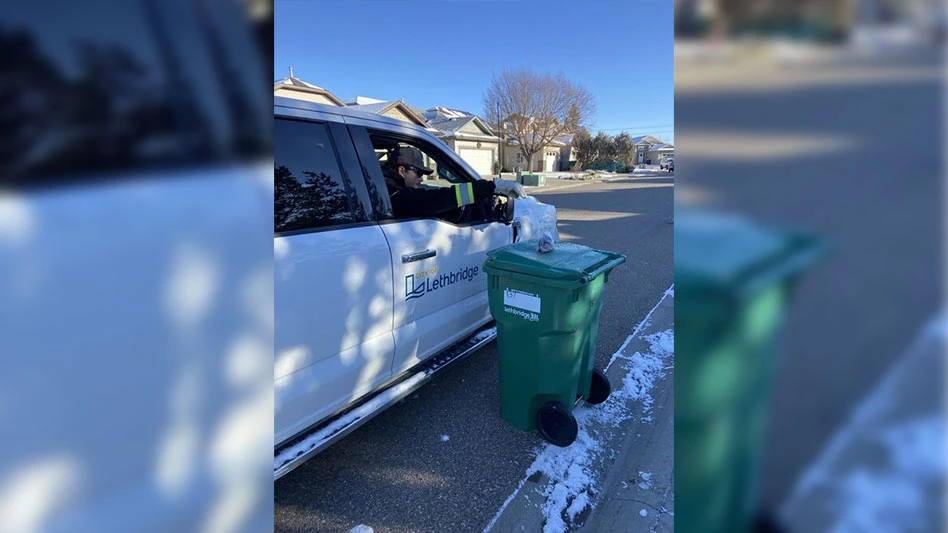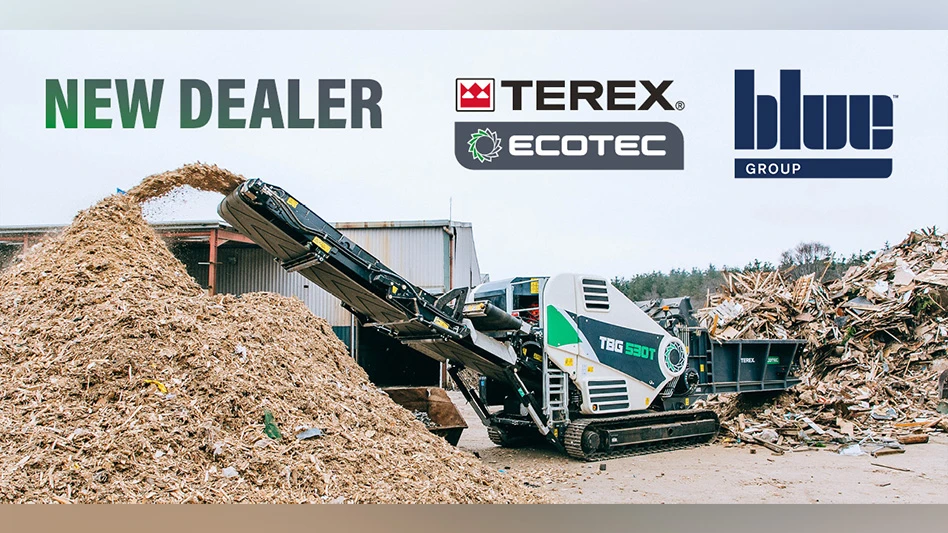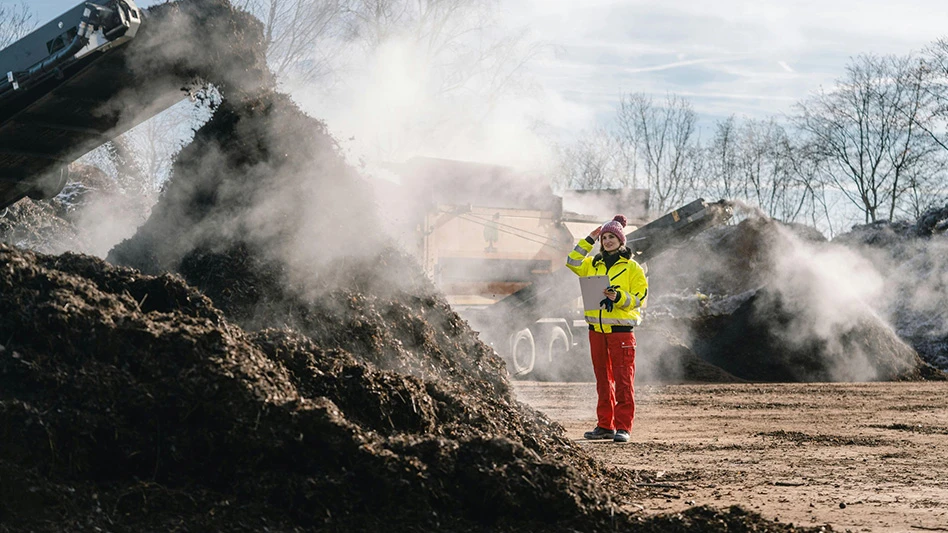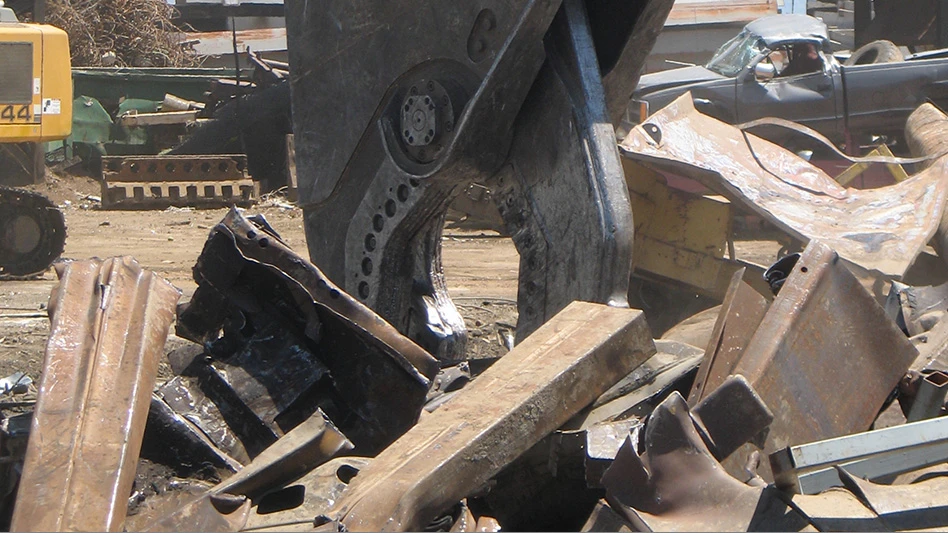
BCA Industries
Traditionally, plastic product original equipment manufacturers (OEMs) have shipped scrap and defective products to China or regional recyclers after shredding for more manageable transport. Further grinding or granulating the plastic to a size suitable to mix with virgin plastic pellets also has enabled reuse in the manufacturing process to reduce input costs.
However, the process of shredding, screening and grinding the plastic to size with different equipment in separate processes can be inefficient and also cause production bottlenecks.
For OEMs of a wide range of plastic products, such as car bumpers, barrels, bottles, garbage cans, gas cans, paint cans and film and wrap, equipment manufacturers offer an alternative: shredder knife technology can help to cut, screen and size plastic materials in a single pass with one machine on-site.
Because the sizing of the scrap can be specified, uniform and even tailored to the manufacturing process, more material can be reused with less labor and processing, boosting profits. Shipping costs also are reduced for scrap transported off-site to be recycled because voids (i.e., empty spaces) within the container are minimized.
By using knife technology, it enables the machine to do the work of a typical shredder and a granulator. It’s also more energy efficient and takes less space on the production floor. Knife technology is flexible enough to be incorporated into the smallest or the largest industrial shearing and grinding equipment.
Conventional equipment limitations
For decades, the reduction of large plastic scrap or unusable products has usually involved shearing equipment, such as dual- or quad-shaft shredders. To further decrease size, this is typically followed by the use of grinding machinery, such as granulators, stone mills, tub grinders or chippers.
Screens often are used at various points, which decreases processing speed. As an example, a standard dual-shaft shredder typically turns material into strips and requires a screening device to reduce plastic material to a specific size, says Doug Bartelt, president of Milwaukee-based BCA Industries, a developer and manufacturer of industrial shredding and recycling equipment as well as knife technology.
Bartelt says conventional shredders like this usually are used in conjunction with granulators.
A single-shaft granulator is a simple device consisting of a knife (or multiple knives) attached to a shaft that mates with a stationary bed knife. Material is randomly chopped and continues to be cut until small enough to fit through a sizing screen in the bottom of the machine.
“Both the shredder and granulator create various sized material. Usually, this is determined by a random event in how the material is fed into the system in terms of speed, timing, etc., which results in about 40 to 50 percent incorrectly sized material. So, efficiency on either of these systems only approaches around 50 percent,” Bartelt says.
Reducing scrap to size
Bartelt and his brother discovered a more efficient way to size without a screen. The insight was developed into BCA’s patented Triplus knife system technology, which changes a standard shredder to a hybrid between a dual-shaft rotary shear shredder and a single-shaft granulator.
The approach uses the grabbing action of a high-torque, dual-shaft shredder to cut the width of the material, while the bed knife design of the shredder sizes the length. This is accomplished in one operation, which produces accurately sized material in one pass without a screen. The end product size is based on the size and geometry of the knives.
Unlike traditional equipment, the knife system can shred, chip and size any kind or size of plastics in a single pass without using a screen. A shredder using this design can produce more than 85 percent correctly sized material in one pass with less than 10 percent oversized material, Bartelt says.
Such regularly sized plastic material facilitates OEMs redirecting scrap back into their own on-site manufacturing process. This move toward a closed-loop sourcing approach can not only dramatically reduce input costs but also eliminate most, if not all, of the expense of shipping plastic materials to be recycled off-site.
With BCA’s knife system, an OEM operator just specifies the chip size needed, and it produces chips in the specified size. The design works with wet or difficult-to-screen materials, and cleanly cuts those that normally create fines and dust. With a traditional system, fines and dust must be air vacuumed away and are considered undesirable for many reasons.
Functionally, for OEMs looking to streamline the plastic scrap reuse or recycling process, the knife system can increase efficiency and throughput, potentially surpassing that of typical granulators, hammer mills, chippers and quad-shaft shredders used in the industry.
By eliminating separate equipment and steps to shred, screen and grind scrap to size—and combining this into a single function—the manufacturing process can be expedited.
Another factor increases production output for OEMs: the rpm of the knives can be adjusted to the load needed for optimal production efficiency. Unlike typical shredders that tend to operate at low speed and high torque, BCA shredders using the knife design can be operated at high speed and low torque for higher production speeds. When more torque is required for anything tougher to grind, the system automatically provides the rpm necessary; it then readjusts to the higher speed, lower torque setting for faster production within seconds.
Additionally, the knife system can reduce plastic scrap to the appropriate size with much less energy than typical shearing and grinding equipment. Power efficiency approaches 150 percent over any standard shredder or granulator.
As an example, with this technology, a 50-horsepower single-pass shredder can produce the same amount of recyclable product per hour as a standard 100-to-150-horsepower conventional system. This can reduce OEM energy costs by $1,500-$5,000 per month while producing a more consistently sized product, ready for on-site reuse or cost-effective transport to a recycling center.
The technology is flexible enough to be installed in any size shredder that BCA builds, from 10 horsepower to 800 horsepower, from a 15 inches by 12 inches cutting chamber to a 48 inches by 72 inches cutting chamber, and is licensable to equipment OEMs looking to build their own branded devices.
In addition to plastics, the knife system design effectively shreds and sizes a wide variety of materials including rubber, paper, cardboard, wood, fabric, copper wire, aluminum, fiberglass and batteries.
OEMs needing to reuse or recycle plastic scrap or defective product have long resorted to overly complex in-house shredding, screening and grinding processes as well as costly shipping to offsite recycling centers.
With industry innovation, however, OEMs can quickly and efficiently cut plastic scrap and subpar products to size on-site. This has the potential to simplify production and reduce shipping costs to boost the bottom line.
Del Williams a technical writer based in Torrance, California, who wrote this piece on behalf of Milwaukee-based BCA Industries.
Latest from Recycling Today
- Phoenix Technologies closes Ohio rPET facility
- EPA selects 2 governments in Pennsylvania to receive recycling, waste grants
- NWRA Florida Chapter announces 2025 Legislative Champion Awards
- Goldman Sachs Research: Copper prices to decline in 2026
- Tomra opens London RVM showroom
- Ball Corp. makes European investment
- Harbor Logistics adds business development executive
- Emerald Packaging replaces more than 1M pounds of virgin plastic





